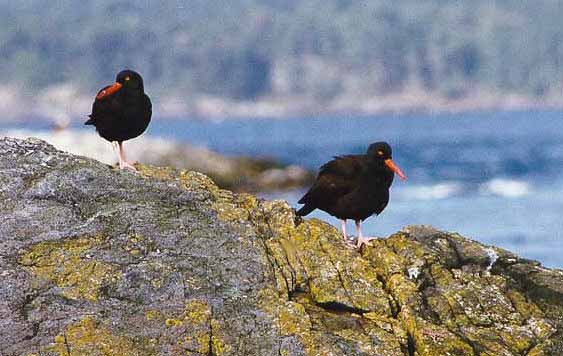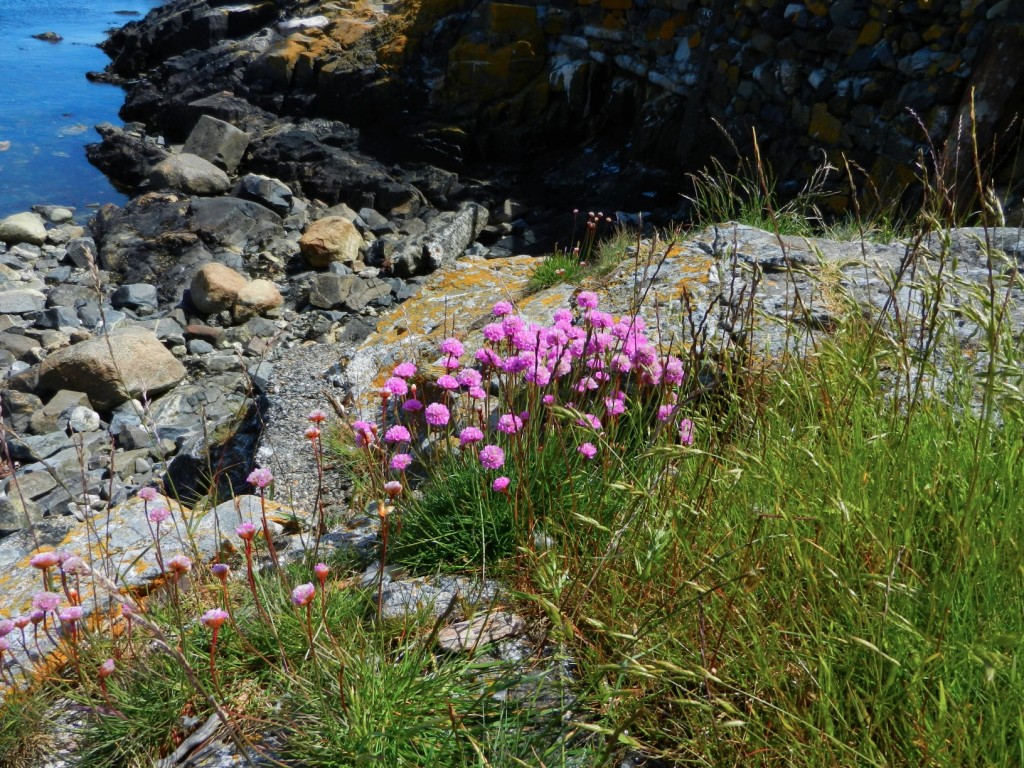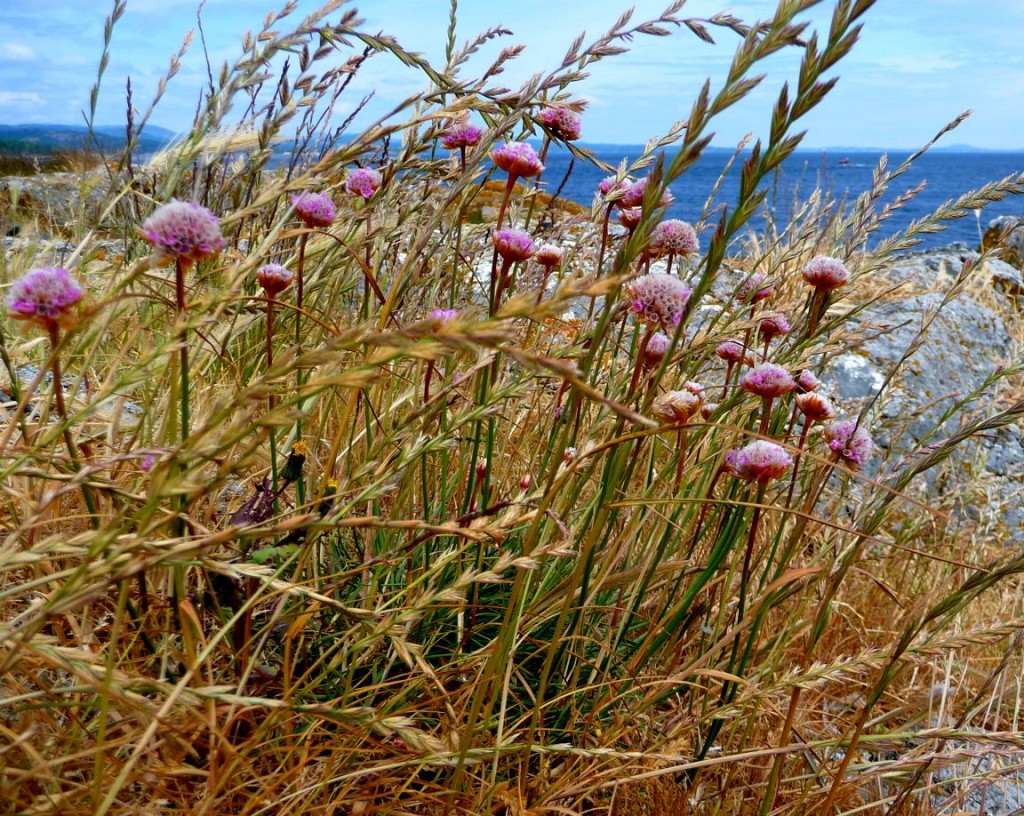
OBJECTIVES: After doing this field lab, students will be able to:
1. Quantify various aspects of the ecological niche of a seabird.
2. Do statistical comparisons using several sets of data collected in the field.
3. Demonstrate an ability to plan the procedure of an investigation.
PROCEDURE:
1. We will collect the evidence for predation in the vicinity of one of the current years oystercatcher nests at Race Rocks Marine protected Area. A previous class may have already done this for you.
2. Your class will be asked to decide on how to analyze this evidence in order to quantify as many aspects as possible about the ecological niche of the oystercatcher. Write down your plans for the investigation before starting.
3. Some hints for your planning:
— How can we estimate the biomass of the food species?
— Are all the prey species at the same trophic level?
— Can you tell something about energy expended by the bird in foraging by looking at the range of the mussel sizes?
— Just how much force (energy) does it take to extract at intertidal organism from it’s habitat?
— What can you contribute in terms of scientific information to this web page?
–Can we make a dichotomous key for identification of the prey species?
–How can we apply the concepts of pyramids of numbers, biomass , and energy with our information?
4. See the results of the Fall 1999 collection of shells from the midden of the oystercatchers. Use these results to help in the planning of this lab. It is assumed you will be able to build on these results and go further in the investigation.
5. –Use the diversity index calculator from the Maryland Sea Grant Extension Program at the Center of Marine Biotechnology to compare the two year’s data. Explain how we may use a diversity index such as this as a monitor of various environmental concerns. Be sure to see the page which describes the application of various indices of diversity.
Other possibilities:
— Use the “Odum” energy symbols to model the ecological Niche of the Black Oystercatcher. (remember – there are NO oysters at Race Rocks!–Can some further media production be done on the oystercatchers?
 The Race Rocks taxonomy is a collaborative venture originally started with the Biology and Environmental Systems students of Lester Pearson College UWC. It now also has contributions added by Faculty, Staff, Volunteers and Observers on the remote control webcams.
The Race Rocks taxonomy is a collaborative venture originally started with the Biology and Environmental Systems students of Lester Pearson College UWC. It now also has contributions added by Faculty, Staff, Volunteers and Observers on the remote control webcams.



